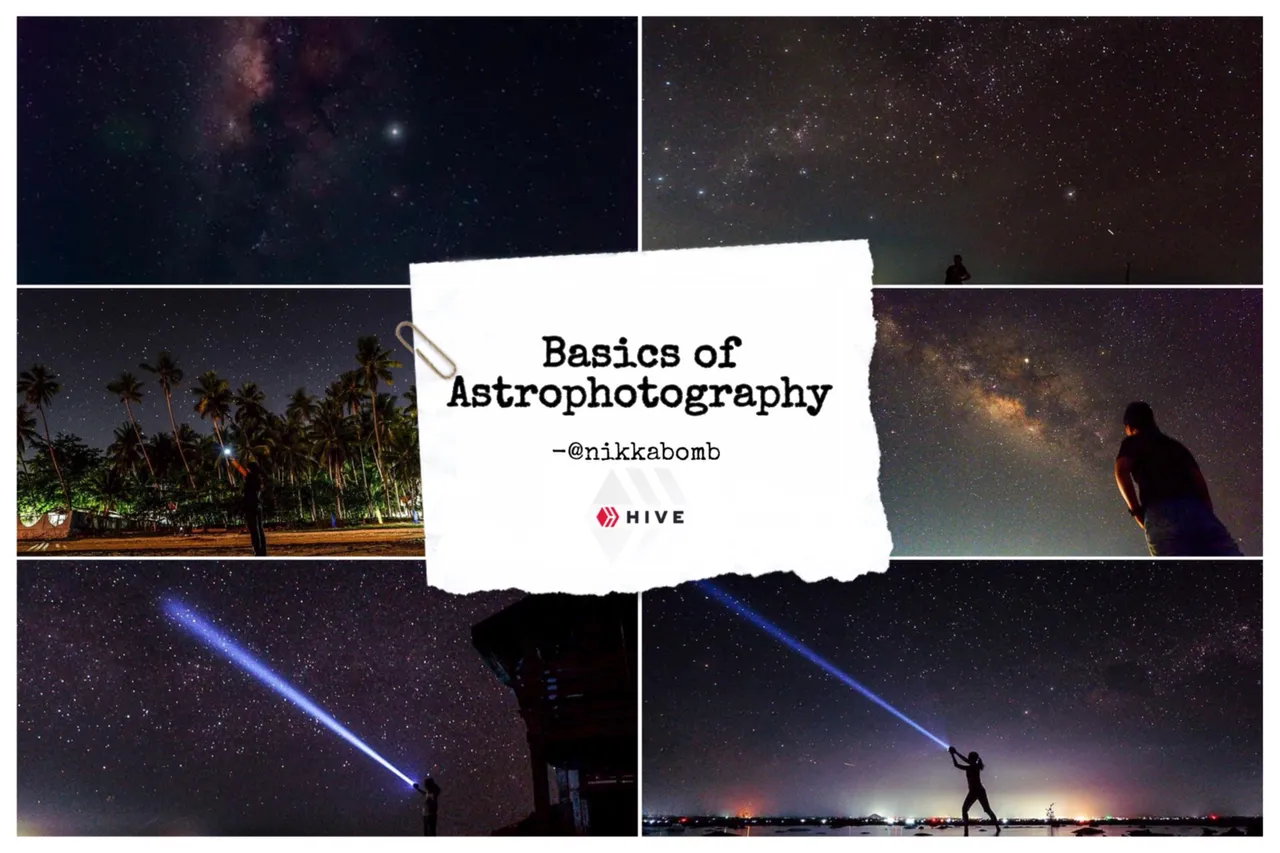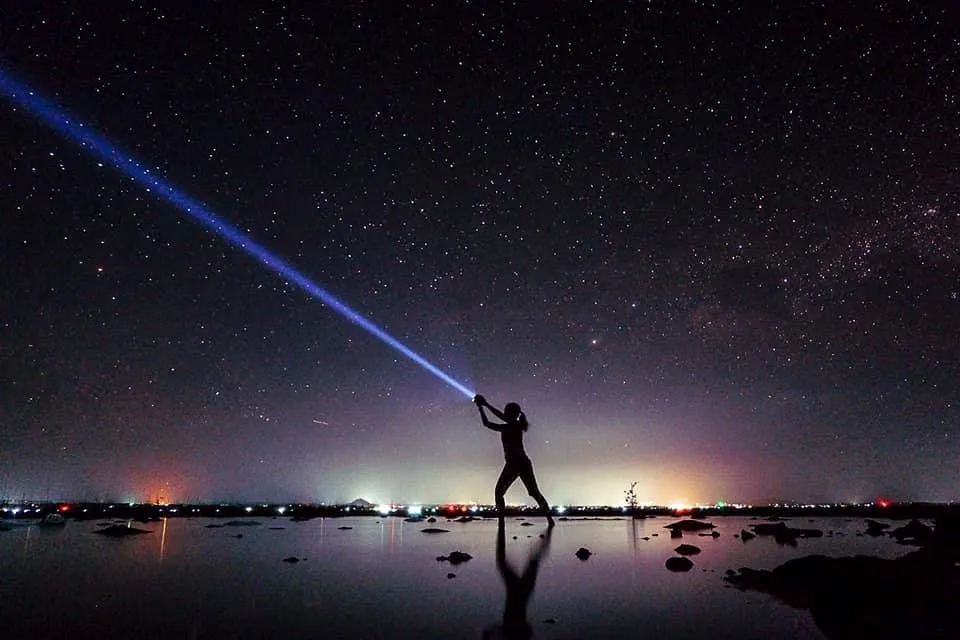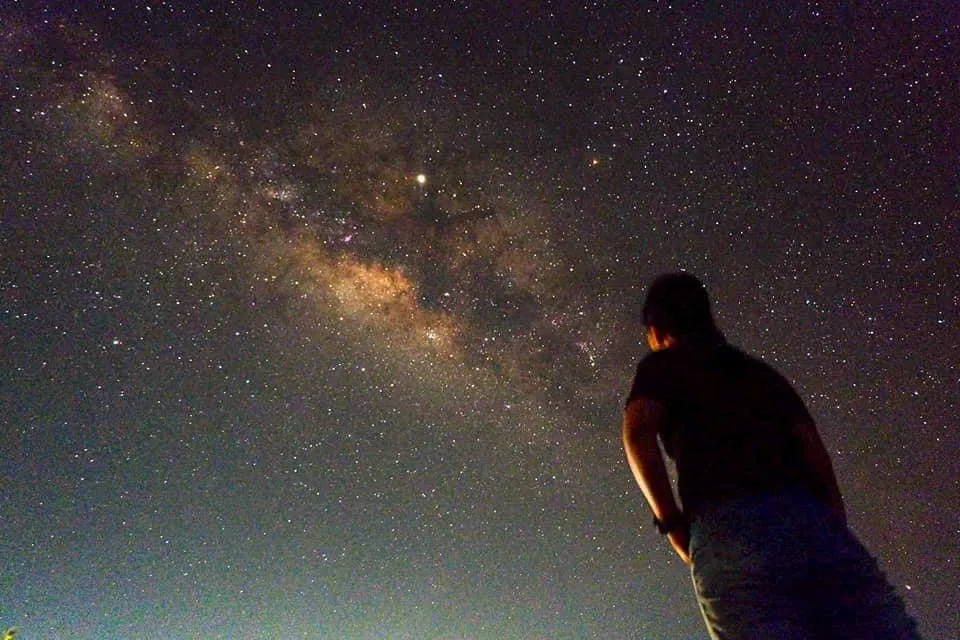Disclaimer: I am just an amateur photographer who wants to share the basics of astrophotography. So bear with me as I share to you all this guide. I hope you will learn something from this.

When I bought my first gear way back 2017, I started with landscape photography as I famliarize the effects of exposure triangle on every shot I take.
It took me a while to manage to capture a well lighted photo without compensating the quality of the photo. In the past years, I have also learned to shoot in RAW for better post processing. However, most of the photos in this blog are revived photos only as I lost my original files and had to get these photos from my Facebook account and Facebook page.
The Gear
 My husband and I are both into photography. We always support each other in our hobby until we made a few money out of it. If it weren't because of photography, we would not have met in the first place.
My husband and I are both into photography. We always support each other in our hobby until we made a few money out of it. If it weren't because of photography, we would not have met in the first place.
Photographing the stars can be done in your mobile phones but for this article I’ll be assuming that you are using either a mirrorless or DSLR/SLR camera. I am still trying a bunch of mobile phone astrophotography at the moment and I still find my learnings inadequate to be published here. So I hope you’ll tune in to be updated as I am really planning to publish a mobile photography 101 soon.
The most important thing about the gear preparation is your lens. You want to capture a wider view so you may want to stick with your wide-angled kit lens or purchase either a prime or zoom lens with wide angle views. As for my photographs, I am using my 16-50mm kit lens for my Fujifilm XA3 and 18-55mm kitlens for my Nikon D5600.
Apart from the lens is the tripod. In your set up, a tripod must be included because you will need a slower shutter speed meaning you need a stable tripod to capture the stars. You will not want to hold your camera until you finish taking the shot.
The Settings
First of all, you need to shoot in Manual mode. This is to enable the adjustment of ISO, aperture, and shutter speed. You may opt to shoot in RAW or not. Advantages in shooting RAW are better post processing and better color grading. However, you may shoot in JPEG to lessen the storage space and for easier compatibility. There are a lot more discussion going on as amateur, hobbyist, and professional photographer shoots on either one of the above-mentioned image quality. I’m not gonna persuade you to choose one because you will find your way soon enough or may have already chosen one over the other. Let’s just focus now to the settings.
Aperture
Use the widest aperture your lens can get. For most kit lenses, the widest aperture available is F/1.8mm.
Shutter Speed
20 seconds of shutter speed is a good duration to capture the stars but a 30-second-shutter speed may be too long and can capture the trails.
ISO
Increasing the ISO depends on the time the photo will be taken. Just increase it not too little to give a good exposure and not too much to avoid unnecessary noise. Of course, you can turn on your camera's Long Exposure Noise Reduction feature.
Additional tip to take note is to take a few shots as your test shots to properly set a good exposure.
White Balance
You may set your white balance between 3000°K-4000ºK depending on your location and environment.
I can only relay what I have learnt and practiced but I myself don’t have a really amazing astrophotography as I am an amateur myself. So here are my sample shots that I have taken in the past years before the Pandemic.
📍Leyte,Philippines This is the first astrophotography that I have tried. I enjoy night strolling since I am mostly busy when the sun is up and I also love star gazing a lot. So I decided to try photographing the stars. Not bad for a first time, right?
This is the first astrophotography that I have tried. I enjoy night strolling since I am mostly busy when the sun is up and I also love star gazing a lot. So I decided to try photographing the stars. Not bad for a first time, right?
📍Bohol,Philippines When I was in Bohol, it was when I resigned from my previous job and considered giving myself a few months vacation. During my stay there, I only go out at night just to practice astrophotography.
When I was in Bohol, it was when I resigned from my previous job and considered giving myself a few months vacation. During my stay there, I only go out at night just to practice astrophotography.
📍Bohol,Philippines I enjoyed astrophotography so much that I stay at a nearby beach til dawn. Until one lucky dawn, I captured the milky way! This is by the way the first time that I did it. Capturing it has the same guide with capturing stars. The only difference is that you need to know where to angle your camera. Finding it gets easier when you’re used to. But it’s even much more easier if you use star tracking app.
I enjoyed astrophotography so much that I stay at a nearby beach til dawn. Until one lucky dawn, I captured the milky way! This is by the way the first time that I did it. Capturing it has the same guide with capturing stars. The only difference is that you need to know where to angle your camera. Finding it gets easier when you’re used to. But it’s even much more easier if you use star tracking app.
📍Cebu,Philippines  This is the last photo I took before I sold my Fujifilm XA3.
This is the last photo I took before I sold my Fujifilm XA3.
Additional Tips
- Charge your battery and bring a spare.
- Look for dark areas or just avoid light polluted areas.
- A moonless night is best for this specific guide. But if it’s the moon you want to photograph then neglect this tip.
- Set up for your composition of choice.
- Lock down the focus and do test shots. You may want to zoom in the image in the LCD to check for sharpness.
- You may want to photograph the whole composition using various of exposures to properly lit the background and merge them to make an HDR composite.
- Lastly, start with a wide aperture and a 20-second shutter speed. Then adjust the exposure using the ISO. This should give you a nicely balanced exposure shot.
Closing thoughts
It was in 2019 when I started sharing the things I have learnt and practiced. I was so eager to share my knowledge that I did set up a Youtube Channel for tutorial 101! I was so happy when I started to receive a lot of comments and messages after posting my first video on Youtube and even much happier when they told me they were able to learn from me. So thank you for reading this far and I hope you find this article helpful.
This has been @nikkabomb saying, "Every professional was once an amateur. So don’t fear beginnings."

Nikka Mededa, the author
I am an engineer, a mother, an aspiring photographer, and also a blogger. A workaholic mom who found its comfort through brewing coffee and making home-cooked meals. I write and read a lot but I think I collect books even more. And there’s nothing more fulfilling than finally ticking off the books my reading list. Hopefully, one day!
I really love to fulfill my childhood dream of becoming an author and so here I am, in my little corner in the blockchain. I hope you had a good read and check out more here ---> @nikkabomb. Lovelots.

